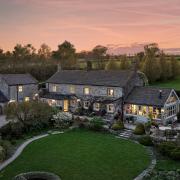A landlocked East Yorkshire town is hoping to make waves with a waterside destination, reports Jo Haywood Photographs by Neil Holmes
Sailing, canoeing and picturesque waterside walks are probably not the first things that spring to mind when you think of Driffield.
Plans are afoot, however, to pump millions of pounds into its canal network, particularly in the Riverhead area, in a bid to make this inland market town into a waterside tourist hotspot.
‘The canal was once the driving force of the town, and we believe it could be again,’ explained David Hamilton, chairman of Driffield Navigation Trust, which is at the forefront of the improvement campaign. ‘We need to create a reason for people to come to the town, and a vibrant waterside area would be just that. If we allow the canal to stagnate, the town will follow suit.’
Driffield Navigation – described by Mr Hamilton as ‘the M1 of its day’ – was established under a 1767 act of parliament as an 11-mile, broad-gauge extension of the River Hull, allowing cargoes of up to 70 tonnes to travel unhindered to and from the capital of the Wolds.
The town’s grain mills used the extended waterway to great effect, shipping their wares across the country and kickstarting the local economy in the process. Driffield prospered but, unfortunately, it didn’t last. Trade began to dwindle from 1870, and by 1931 profits were at an all-time low and the canal route was all but dead in the water.
‘We soon saw the result of this benign neglect,’ said Mr Hamilton. ‘A lot of people in Driffield forgot they had a canal. It was in a very sorry state for a long time.’
It would have been all too easy to allow the canal to continue stagnating. Some even called for it to be filled in and filed under ‘lost in the mists of time’. But others, namely Driffield Navigation Trust, took a more proactive, forward-thinking approach, recognising the waterways’ potential as a leisure and tourist attraction.
To that end, members have worked ceaselessly over four decades to restore key areas of the canal and Riverhead, raising more than �500,000 and spending countless man-hours in the process. In that time, the trust has restored all five locks and two of the major bridges on the navigation as well as adding bonus items like picnic tables to bring in more leisure visitors and locals looking for an attractive retreat away from the busy main street.
A low, fixed bridge at Wansford, installed by the county council in 1967, has proved to be a much-criticised sticking point over the years as it prevents most water traffic from passing through. But the trust is not going to let this obstacle get in the way of its future plans for Driffield’s waterways.
A new swing bridge at Wansford would cost somewhere in the region of �1.5 million, but the trust has its sights set on a much grander, more expansive plan that could boost the entire navigation and, perhaps, prove to be a turning point in the fortunes of the town as a whole.
‘We have to think big,’ said Mr Hamilton. ‘We have battled for �1.5 million for Wansford bridge, but that won’t make the most of the opportunities the canal offers. To do that we need at least ten times that amount of money. We believe the money and the goodwill to get this project done are out there.
‘People are keen to make the most of the canal and to enjoy the knock-on effects that will have for the rest of the town. The renaissance of the waterway will be the renaissance of Driffield.’
The joint plan drawn up by the trust and its partners – Yorkshire Forward, Driffield Partnership and East Riding of Yorkshire Council – includes moorings, marine services, a cafe, parking, a playspace, a heritage centre, walking and cycling pathways and conservation of the navigation’s historic warehouses. But at an estimated cost of around �15 million, will it really happen?
‘It will,’ said Mr Hamilton. ‘It has to. The wonderful work we have already done on the canal is a tribute to the foresight of the people who have funded us and the dogged hard work of our volunteers. To stop now is inconceivable.
‘Driffield became the capital of the Wolds because of its canal. If it wants to survive and thrive it needs to turn to its network of waterways once again.’
Getting there: Driffield sits about 10 miles in from the coast at the junction of the A166 to York and the A614 to Bridlington. Bus details are available at yorkshiretravel.net. Driffield station is on the Yorkshire Coast Line and is operated by Northern Rail – more details are available at northernrail.org.
Parking: There are numerous car parks in the town, including two free facilities at Cross Hill and Eastgate. On-street parking is also available along the main street on non-market days.
Where to visit: The 500-year-old tower of All Saints’ Church can be seen from miles around, but is well worth a closer look. If you have money burning a hole in your pocket, pop along to the weekly Thursday and Saturday markets or save up for the monthly farmers’ market. And if you visit in July, make sure the annual agricultural show – one of the finest in the country – is on your to-do list.


























